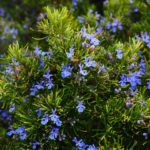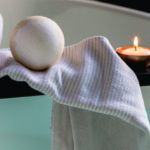Fall Nourishment Guide: Seasonal Nutrition
Autumn is the season of wind and dryness. For those in Sonoma County and other fire-prone areas, you have probably been experiencing this first hand. The climate change wake-up calls are increasing, and we’ve got a lot of work to do collectively. But meanwhile, it’s time to recharge: to slow down, soothe, ground, moisten and nourish. After being hit with wildfire smoke and all the associated upheaval this past week, we need to get our self-care groove on. We all need it, in every part of us. This time of year, our nervous systems and respiratory tracts are especially vulnerable and will benefit from the extra support.
Here’s some of my top tools for nourishing with food, herbs and other self-care strategies.
Food is Medicine
- Wholesome, cooked foods tend to be the most nourishing. Stress can impair digestion, so it’s good to keep it simple.
- Focus on textures that are smooth and easily chewed. At the top of that list are soups, stews, purees, kitchari, and congee.
- Limit rough, crunchy, and processed foods because they are drying and tend to be pro-inflammatory.
- Moistening ingredients include medicinal mushrooms like maitake, oyster, and shiitake, seaweed, colorful root vegetables and winter squash.
- Leafy greens and brassica vegetables, while not particularly moistening, provide important detoxification compounds to keep lungs and the rest of our bodies healthy. If you want more detoxification support suggestions, look to my “Fire Protection Essentials” series, including part 1, part 2 from 2017 and a detox shopping list.
- Healthy fats are lubricating, such as avocados, sprouted nuts and seeds, butter/ghee, and cold pressed oils such as pumpkin seed or olive oil.
- Enjoy sweet flavors, which are moistening and grounding. I’m not talking about the empty calorie desserts that cause blood sugar crashes; look to the simple sweetness of whole foods, balanced with fats, fiber, and or protein. Some of my favorite treats are baked pears or apples, chia coconut milk pudding, or a Medjool date stuffed with ghee and nut butter. Stay tuned for my best ever maple-nut apple crisp recipe. (I have to measure it out again before I post!)
Herbal Allies
- Mucilaginous herbs help moisten lungs and sinuses. They enhance protective barriers that shield from pollutants and other intrusions. Marshmallow root is one of the safest, most effective, and abundant herbs for helping to soothe dry, raspy membranes. It is safe for the whole family. If you don’t want to mess with loose herbs, Throat Coat tea is very soothing and contains mucilaginous herbs like slippery elm and licorice.
- If you are stuck in hypervigilance mode, nervine herbs can really help. Wild oat, jujube, lemon balm, chamomile, skullcap and tilia are all soothing to frazzled nerves and can relax the dominance of the sympathetic nervous system. Nervines can be combined, or taken individually as tinctures or tea. Farmacopia, where I have my medical practice, has some excellent pre-made tincture formulas for stress. Otherwise, you can pick up loose herbs or plain herbal tea bags. If some of these herbs feel too drying or bitter, add marshmallow tea or a pinch of licorice for more softness.
- Adaptogenic herbs help balance the HPA (hypothalamic pituitary adrenal) axis. The HPA axis is involved with cortisol output, another important stress-induced pathway that can get stuck in the “on” position. Adaptogens can alleviate some of the pressure caused by chronic stress, which can otherwise come back to haunt you later with a crash in energy and susceptibility to infections. Or it can exacerbate metabolic issues like weight gain and blood sugar imbalances. There are dozens of adrenal supportive herbs and they all have different ‘feels’ to them. So I try to match to each person’s energetic needs. Nonetheless, some of the most nourishing adaptogens for this season are: reishi, American ginseng, ashwagandha, processed rehmannia and licorice. Licorice is especially building for the adrenals and moistening for mucous membranes, but if you think you have high cortisol or you have high blood pressure, skip it. Others to consider are schisandra, holy basil and rhodiola, though these can be a little more drying. These are all available as tinctures or you prefer an herbal powder, check out Farmacopia’s Stress Adapt powder.
Self-Care Activities
- Bathe with Epsom salts, lavender essential oil, and candlelight. If you want to take it to the next level, you can follow your bath with a Short Wrap.
- Walk along the ocean, ideally barefoot
- Hike among the redwoods
- Turn off your phone
- Do things that make you laugh
- Tune in to gratitude
Nourish now, and this will fortify you for the journey ahead.
Disclosures: This blog does not constitute medical advice and has not been evaluated by the FDA. Consult your care provider for specific suggestions for your personal needs and circumstances, especially if you have any medical conditions, are taking medications, or are pregnant or nursing.
I receive no financial compensation for purchases at Farmacopia — if you’ve never been there, it’s a true Sonoma County gem, and honestly, you may feel better just by walking in the door.



